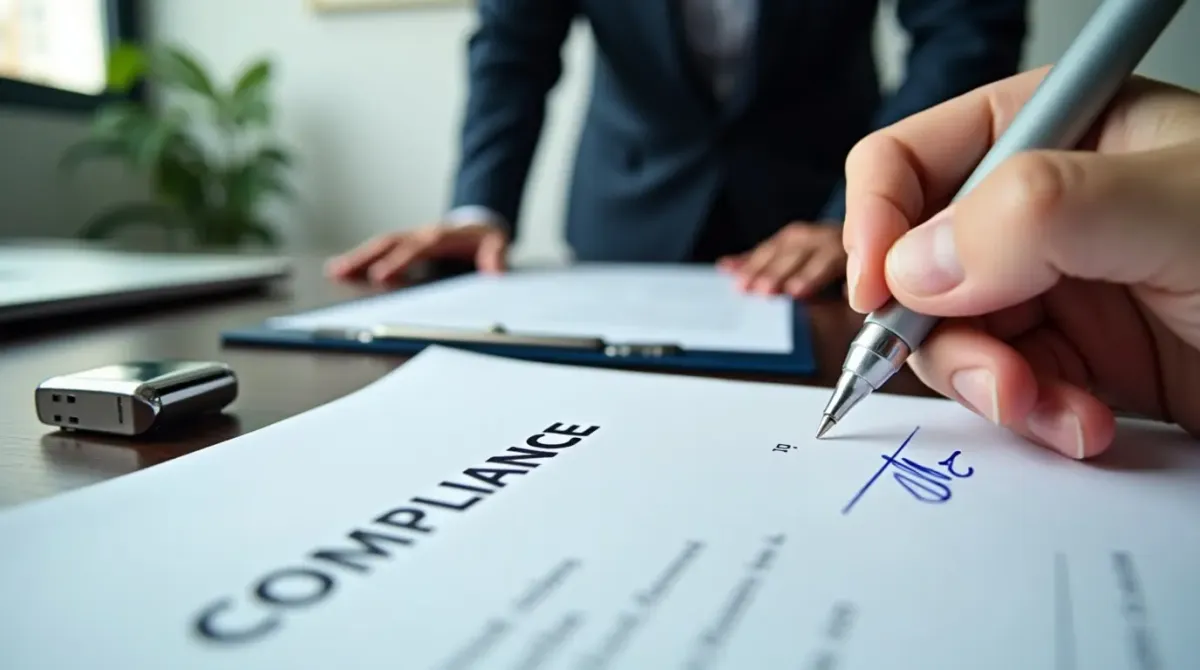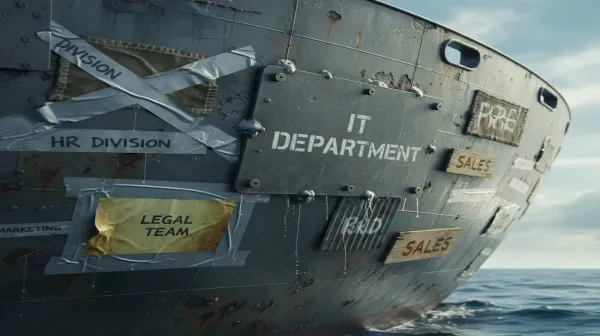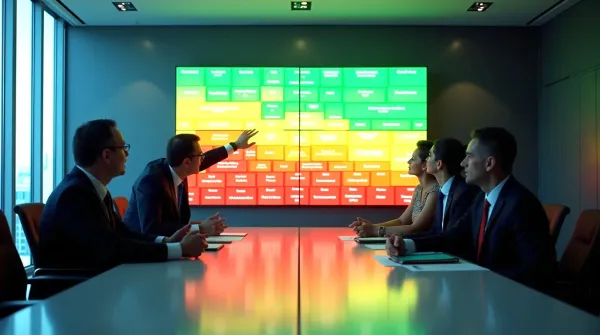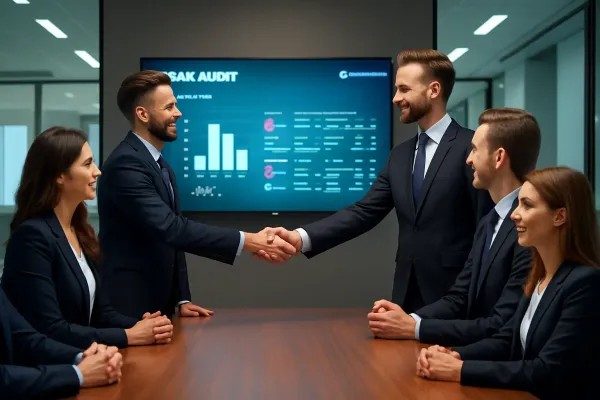The Essential Guide to TISAX® Supplier Assessments and Why MSPs Matter Most
This guide explains the importance and method for your TISAX® supplier assessments.

Table of Contents
-
Introduction
Why You Can't Ignore Supplier Risk
The 5 Core Reasons TISAX® Requires Supplier Assessments
The Specific TISAX® Controls That Mandate This
What to Do If Your Supplier Isn't TISAX® Compliant
What Happens If You Skip This Step
The Benefits for Your Supplier including Your MSP
Final Takeaway: Make Supplier Assessment a Non-Negotiable
How We Help You Assess Your Suppliers
Introduction
You're gearing up for your TISAX® assessment. You've started mapping out your internal security policies, closing gaps, and prepping your team for what's ahead. But then, something unexpected hits your radar:
"Do we need to assess our suppliers too?"
The answer is yes. All suppliers who handle sensitive information or provide services that impact your security must be assessed. That includes everything from design contractors and prototype builders to cloud providers.
But here's the catch: not all suppliers carry the same weight. Some might only touch low-risk data, while others sit at the very heart of your operations. And when it comes to risk, managed service providers (MSPs) are the ones you can't afford to overlook. They manage your IT, process your data, and often have privileged access to your systems. If they aren't secure, you aren't secure.
That's why TISAX® doesn't just look at your own controls. It looks at everyone in your supply chain. And if your suppliers, especially your MSPs, aren't being assessed, you won't get the label. It's that simple.
Why You Can't Ignore Supplier Risk
TISAX® makes no distinction between internal systems and outsourced ones. If a supplier touches your data, they're part of your security perimeter.
That means every supplier matters, but MSPs sit at the top of the risk pyramid. They don't just process files: they often control the infrastructure your business runs on. If they fail, the fallout can be as damaging as a breach inside your own walls.
This is why auditors take supplier risk so seriously: ignoring even one high-risk supplier could undermine your entire compliance effort.
The 5 Core Reasons TISAX® Requires Supplier Assessments
-
Shared Responsibility Is Non-Negotiable
You're accountable for all suppliers who handle sensitive information. MSPs, because of their deep access, are the most critical. -
Your Supplier Holds Your "Protection Objects"
From prototype data to customer records, if a supplier has access, they're a custodian. MSPs often hold the most valuable "protection objects" in your IT environment. -
You Need a Holistic View of Risk
TISAX® requires you to consider risks across your full supply chain, not just internally. High-risk suppliers like MSPs must be assessed in detail. -
Weak Links Break the Chain
Every supplier is part of the security ecosystem. But MSPs can be the biggest weak link because of their privileged access. -
Your TISAX® Label Represents More Than Just You
If your supplier isn't trustworthy, your label and your reputation lose value. And if that supplier is your MSP, the risk is multiplied.
The Specific TISAX® Controls That Mandate This
Two controls from VDA ISA Catalogue Version 6.0.3 (English) make supplier assessment mandatory:
Control 6.1.1: To what extent is information security ensured among contractors and cooperation partners?
Applies to all suppliers. You must enforce security obligations in contracts, monitor their compliance, and prove you're managing their risks.
Control 5.3.3: To what extent is the return and secure removal of information assets from external IT services regulated?
Applies especially to MSPs and IT service providers. You need defined rules for secure data return or deletion when the service ends.
Together, these controls prove that you can't ignore any supplier, but MSPs are the ones your auditor will scrutinize most closely.
What to Do If Your Supplier Isn't TISAX® Compliant
- Perform a risk assessment: For all suppliers but prioritize MSPs given their elevated risk.
- Update contracts: Include security clauses, incident reporting, and data return/deletion.
- Get proof: Request security evidence; with MSPs, this should be especially thorough.
- Review regularly: Apply ongoing oversight to all suppliers, with deeper checks for MSPs.
- Have a contingency plan: Limit access or replace high-risk suppliers if necessary.
Your supplier doesn't need a TISAX® label, but you do need to prove you're managing them properly, especially MSPs.
What Happens If You Skip This Step
- You could fail your TISAX® audit if any supplier risk is unmanaged.
- Your label could be seen as weak or unreliable, especially if your MSP isn't covered.
- A supplier breach could cause reputational damage for you.
- You'd miss a chance to strengthen your overall security posture.
Bottom line: ignoring supplier assessments, particularly for MSPs, is a direct path to non-compliance.
The Benefits for Your Supplier including Your MSP
Suppliers often see TISAX® assessments as extra work. But in reality, cooperating brings real advantages:
- Stronger market position: Compliance makes them a preferred partner.
- Improved security practices: Assessments close security gaps.
- Greater trust with clients: Security-minded suppliers win better contracts.
- Easier contract negotiations: Less pushback when requirements are already proven.
- Future-proofing: Compliance now keeps them competitive as security demands rise.
Extra Benefit: Ready for Other Certifications
Aligning with TISAX® supplier requirements also prepares MSPs and IT providers for:
- ISO/IEC 27001:2022: Supplier oversight required under A.5.19- A.5.21.
- CMMC: Supplier oversight required for handling CUI under 3.12.1 and 3.1.20.
By meeting TISAX® requirements, MSPs can reuse the same documentation and evidence across industries, making them compliance-ready partners beyond automotive.
Final Takeaway: Make Supplier Assessment a Non-Negotiable
If you're aiming for TISAX® certification, supplier assessment isn't optional. It's required for all suppliers. And MSPs are the most critical to get right.
By assessing, documenting, enforcing, and monitoring your suppliers, you'll protect your compliance, your reputation, and your client relationships. And for suppliers, these assessments are not just a burden. They're a chance to strengthen their business and future-proof against wider certification demands.
Because at the end of the day, TISAX® is about trust. And trust only holds if the entire supply chain is secure starting with your MSPs.
How We Help You Assess Your Suppliers
Getting supplier assessments right can feel overwhelming—but you don't have to start from scratch. To make this process easier, we've prepared three practical tools that are aligned with TISAX Control 6.1.1 and 5.3.3, as well as ISO 27001 supplier requirements.
Here's what you can use right away:
1. Supplier Information Security Risk Assessment Template
This template helps you score each supplier against four key factors:
- Data sensitivity
- System access level
- Business impact if the service fails
- Access to prototypes
It includes a built-in risk scoring model (Low, Medium, High) and guides you on what due diligence steps are required at each level: for example, NDAs and contract clauses for low risk, security questionnaires for medium risk, and formal certifications for high risk.
Use this first to decide which suppliers are high priority for deeper assessments.
2. Essential Supplier Security Questionnaire
This is a 15-question quick check that covers the core security controls from TISAX and ISO 27001, including:
- Security policy and governance
- Access controls (MFA, least privilege)
- Encryption
- Incident management and breach notification
- Certifications and compliance (e.g., TISAX, ISO 27001, SOC 2)
It comes with a simple scoring system:
- 13–15 "Yes" = Low risk
- 10–12 "Yes" = Medium risk
- Below 10 "Yes" = High risk
Use this for all suppliers, and especially to filter out those who don't meet the most basic requirements.
3. Detailed Supplier Security Questionnaire
For critical suppliers like MSPs, this 11-section questionnaire digs deep into areas such as:
- Information security governance and risk management
- Human resources security (background checks, training)
- Access control and cryptography
- Physical and environmental security
- Operations security, patching, and monitoring
- Incident response and business continuity
- Compliance, data protection, and privacy
- Cloud and third-party services
- Vulnerability management
It includes a scoring guide that categorises suppliers as Low, Medium, or High Risk based on evidence provided.
Use this for suppliers who score medium/high risk in your initial assessment—especially MSPs that have direct system access or handle sensitive data.
Your Next Step
By using these three tools together, you'll have a structured, defensible, and TISAX-aligned approach to supplier assessment:
- Start with the Risk Assessment Template → identify which suppliers are high risk.
- Apply the Essential Questionnaire → screen all suppliers quickly.
- Use the Detailed Questionnaire → go deep on your MSPs and other high-risk providers.
This way, you'll not only meet the TISAX requirements but also strengthen your overall supplier management and be prepared for ISO 27001 and CMMC demands.
Just send an email to ix@isegrim-x.com for the template and the questionnaires.




